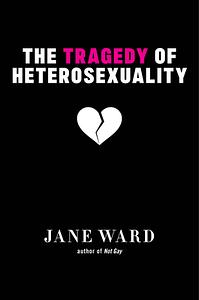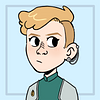Take a photo of a barcode or cover
challenging
hopeful
informative
reflective
medium-paced
informative
reflective
medium-paced
funny
hopeful
informative
inspiring
reflective
medium-paced
emotional
hopeful
informative
reflective
fast-paced
Graphic: Misogyny, Sexism
Moderate: Body shaming, Cursing, Domestic abuse, Emotional abuse, Physical abuse, Racism, Rape, Sexual assault, Sexual content, Sexual violence, Gaslighting, Sexual harassment
Minor: Adult/minor relationship, Child abuse, Death, Eating disorder, Fatphobia, Incest, Pedophilia, Slavery, Murder, Colonisation
challenging
informative
reflective
slow-paced
challenging
informative
reflective
hopeful
informative
reflective
medium-paced
I really enjoyed the chapters of this book, pretty much reading/listening to them in one setting each on different days. My only qualm is that they felt a little bit loosely tied together as a whole, mainly (to me) because it wasn't always clear who the audience was meant to be, or that the audience slightly shifted from chapter to chapter.
From a bisexual perspective I found chapters 2 and 3, and the beginning of 5 to be the most informative and interesting as an answer to questions many queer people have about why straight people are "like that" as it were, and what is possible to do about that. Chapters 1 and 4, although entertaining at points, didn't really present a lot of new ideas to me, making me think it was addressed more towards a straight audience. But then so much of it was about hammering in queer aversion and deep dislike of straight people/culture that I started to wonder whether a straight person reading it would bother reading past a few pages? So I was pondering that, but in any case I did like the book & have some new ideas/framing to take from it.
From a bisexual perspective I found chapters 2 and 3, and the beginning of 5 to be the most informative and interesting as an answer to questions many queer people have about why straight people are "like that" as it were, and what is possible to do about that. Chapters 1 and 4, although entertaining at points, didn't really present a lot of new ideas to me, making me think it was addressed more towards a straight audience. But then so much of it was about hammering in queer aversion and deep dislike of straight people/culture that I started to wonder whether a straight person reading it would bother reading past a few pages? So I was pondering that, but in any case I did like the book & have some new ideas/framing to take from it.
want to state - i am queer, so definitely not the main audience for this book. i'm also ace, am not close to my biological family, and deeply value/cherish/derive comfort/pour into my friendships.
thoughts:
thoughts:
- i didnt know much about the pick up coaches so that was strange and interesting
- i think from the blurb i was expecting more about metoo
- ik its spposed to be more about theory and not necessarily a how to but i think if i were straight i would want more concrete steps. most of the stuff about queerness is queer ppl being like straight ppl are weird but maybe thats not the scope of the book anyways
- theres also kind of a flattening of romance v sex and not really talk about the difference (bc im sure some straight women would be like oh but i want a romantic relationship w a straight man what do i do now)
challenging
funny
hopeful
informative
reflective
medium-paced





